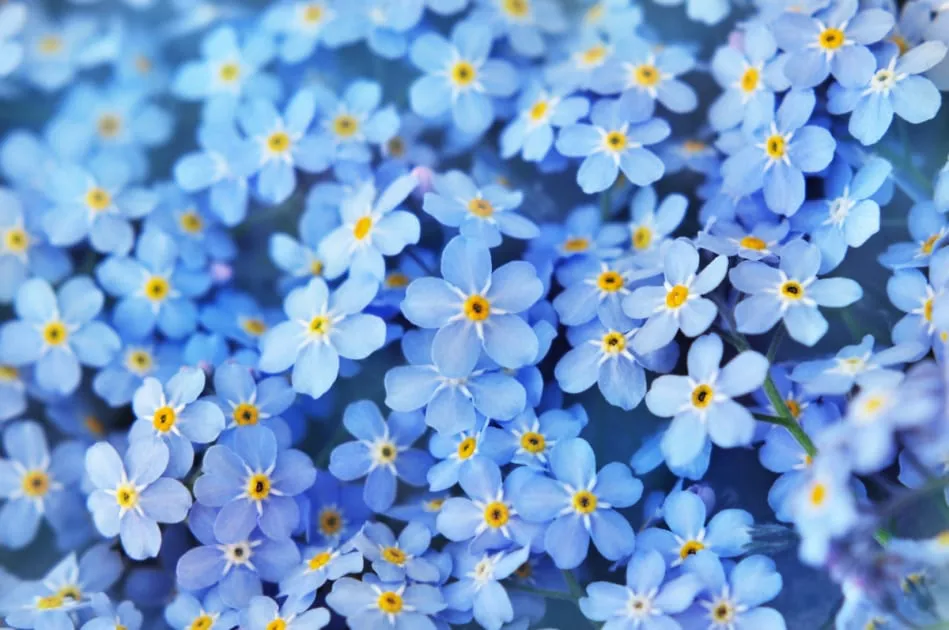Depression, a multifaceted and often misunderstood mental health condition, affects millions worldwide. Its complex nature is mirrored in various aspects of life, including art, literature, and even nature. Flowers, with their diverse forms and symbolic meanings, have long been used to convey emotions and experiences, including those associated with depression. In this article, we delve into the symbolism of five flowers that represent depression, shedding light on the intricate relationship between nature and human emotion.
1. Black Rose: The Shadow of Despair
The black rose, a rare and enigmatic bloom, has long been associated with death, mourning, and the darker aspects of life. Its velvety petals, devoid of vibrant colors, evoke a sense of solemnity and melancholy. In the language of flowers, the black rose symbolizes farewell and the end of a chapter, echoing the feelings of hopelessness and despair often experienced by those grappling with depression.
For individuals navigating the depths of depression, the black rose serves as a poignant reminder of the shadowy veil that shrouds their perception of the world. Its presence in floral arrangements or as a solitary bloom underscores the profound sense of isolation and emotional pain that accompanies the condition. Yet, amidst the darkness, the black rose also carries a message of resilience, reminding us that even in the bleakest moments, there remains a glimmer of beauty and strength.
2. Wilted Lily: Fading Hope and Lost Innocence
The delicate petals of the lily, with their graceful curves and pristine white hue, traditionally symbolize purity, renewal, and the promise of a new beginning. However, when the lily wilts and droops, its once-vibrant beauty fades into a haunting semblance of its former self. In the language of flowers, the wilted lily represents lost innocence, faded hope, and the gradual erosion of vitality.
For individuals grappling with depression, the wilted lily serves as a poignant metaphor for the gradual erosion of hope and optimism. Like the flower deprived of nourishment and sunlight, those affected by depression may feel their inner light dimming as they navigate the challenges of mental illness. The sight of a wilted lily serves as a somber reminder of the fragility of the human spirit and the need for compassion and support in times of darkness.
3. Bleeding Heart: A Symbol of Emotional Pain
The bleeding heart, with its unique shape resembling a tear-streaked heart, is renowned for its evocative symbolism of emotional pain and unrequited love. The vivid red or pink blossoms, punctuated by a droplet-like protrusion, capture the essence of heartache and longing. In the language of flowers, the bleeding heart conveys sentiments of sorrow, grief, and the enduring ache of unfulfilled desires.
For individuals contending with depression, the bleeding heart holds profound resonance as a symbol of emotional turmoil and inner anguish. Its striking appearance serves as a visual representation of the emotional wounds that remain unseen yet deeply felt. Like the bleeding heart, those affected by depression may grapple with a sense of emotional vulnerability and the struggle to reconcile their inner pain with outward appearances. Yet, amidst the tears and sorrow, the bleeding heart also embodies resilience, reminding us of the healing power of love and compassion.
4. Forget-Me-Not: A Cry for Recognition and Connection
The forget-me-not, with its delicate azure blossoms and golden centers, is imbued with poignant symbolism in the language of flowers. Traditionally associated with remembrance and enduring love, the forget-me-not serves as a poignant reminder of the importance of connection and recognition. Its name evokes a plea to be remembered and acknowledged, even in the face of adversity or forgetfulness.
For individuals grappling with depression, the forget-me-not carries profound significance as a symbol of their innermost longing for understanding and empathy. The azure blooms serve as a silent plea for recognition, a reminder that amidst the tumult of mental illness, their experiences and emotions are valid and deserving of acknowledgment. In a world that often overlooks or stigmatizes mental health challenges, the forget-me-not stands as a testament to the resilience and inherent worth of every individual struggling with depression.
5. Night-Blooming Cereus: Embracing Darkness and Transformation
The night-blooming cereus, a mysterious and ethereal flower that blooms only under the cover of darkness, holds a place of reverence in botanical lore. With its ghostly white petals and intoxicating fragrance, this nocturnal bloom symbolizes mystery, transformation, and the beauty that emerges from darkness. In the language of flowers, the night-blooming cereus embodies the idea of embracing the shadow self and finding strength in vulnerability.
For individuals navigating the depths of depression, the night-blooming cereus serves as a potent metaphor for the process of transformation and inner growth. Like the flower that blooms in the darkest hours of the night, they may find moments of clarity and insight amidst the shadows of their own minds. The night-blooming cereus inspires hope that even in the midst of despair, there exists the potential for renewal and spiritual awakening.
Conclusion
In conclusion, the symbolic language of flowers offers a profound lens through which to explore the complex terrain of depression. From the somber elegance of the black rose to the transformative beauty of the night-blooming cereus, each flower embodies facets of the human experience that resonate deeply with those contending with mental illness. By acknowledging and honoring these symbols, we foster greater understanding, empathy, and compassion for individuals grappling with depression, illuminating the path toward healing and renewal.


